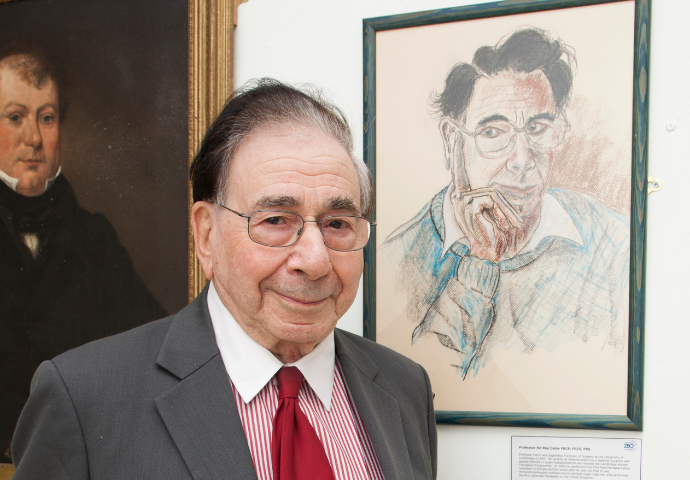Sir Roy undertook Europe’s first successful liver transplant in 1968 – and other world firsts and made many important discoveries – helping Addenbrooke’s become the internationally famous transplant centre it is today.
The Trust named its fifth floor transplant unit after him in June 2021, complete with a plaque, and a book of remembrance is due to be set up in the Addenbrooke’s chapel.
Among those who worked under him as junior doctors, later becoming well-known consultant transplant surgeons, are Professor Chris Watson, now retired, and colleague Mr Andrew Butler. He inspired a generation of transplant surgeons such as the present Clinical Director of Transplantation, Mr Asif Jah.
Professor Watson said: “Sir Roy was a very talented individual with a passion to improve the outcomes for patients with organ failure. He was a true pioneer in the field of transplantation, and many patients are alive thanks to his work, both directly and indirectly through his discoveries. He will be greatly missed and our immediate thoughts are with his family and many friends."
Professor Watson and Mr Butler welcomed Sir Roy back to Addenbrooke’s on 2 May 2018 when they showed him a new liver perfusion machine that pumps a blood-based solution through the organ to preserve it, and allow its function to be tested. In typical style Sir Roy - who was invited 50 years to the day after he conducted Europe’s first liver transplant - was enthusiastic and eager to learn more.
Mr Jah recalled conversations about Sir Roy and colleagues as they weighed up the risks and benefits of pioneering techniques.
He said: “These conversations led to his ground-breaking work in transplant surgery and immunosuppression that laid the foundations of transplantation as we know it today, and helped this hospital become a world-leading transplant centre. He continued work on his passion of improving the outcomes of transplantation even after retirement. He was a great inspiration.”
Mr Neil Russell, Transplant Surgery Lead at Addenbrooke’s said: “I did not have the privilege to work under Sir Roy as he retired prior to me arriving in Cambridge. However, his legacy remains very palpable in Addenbrooke’s to this day, from the ethos and work ethic that surrounds all those working in the transplant unit named after him, to the way he is talked about within the unit and the wider hospital.
“Most importantly, however, is the effect he had on the lives of all the transplant patients he worked so tirelessly to make better. He is a true giant in the field of Surgery and Medical Research and his legacy will be felt for a very long time.”
Sir Roy, who was responsible for introducing several of the immunosuppressive drugs used today, won as assortment of awards, prizes and honours including his knighthood in 1986.
As Professor of Surgery between 1965 and 1998, undertook:
1965 – Cambridge’s first kidney transplant
1968 – Europe’s first liver transplant
1978 – World’s first use of immunosuppressant ciclosporin - responsible for major improvement in outcomes of kidney, liver, pancreas and thoracic transplants
1987 - World's first liver, heart and lung transplant with Papworth’s John Wallwork
1992 – UK’s first intestinal transplant
1994 – World’s first successful multi-visceral transplant combining stomach, intestine, pancreas, liver, and kidney cluster.



